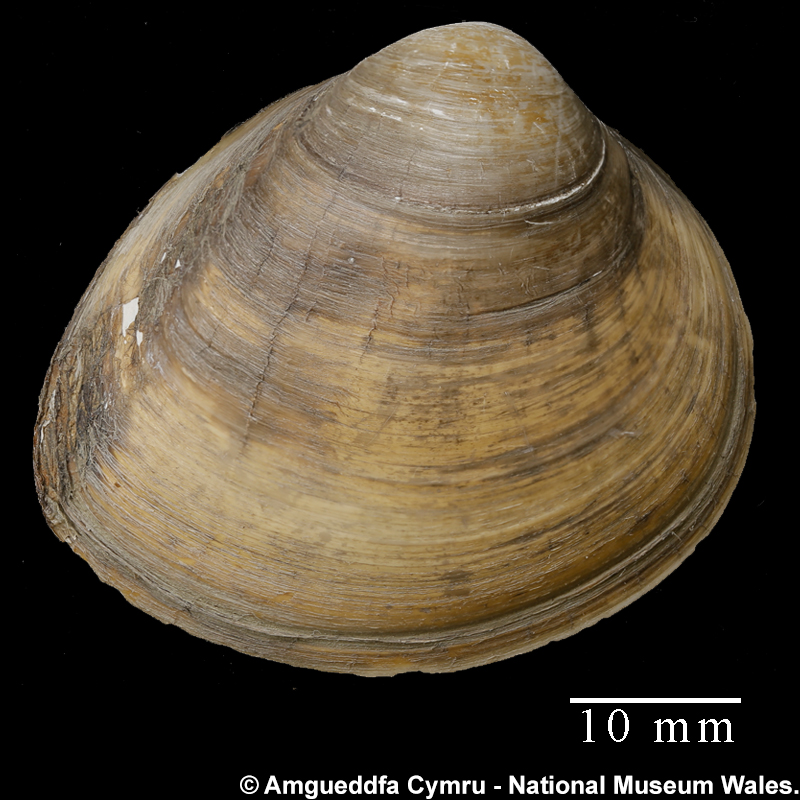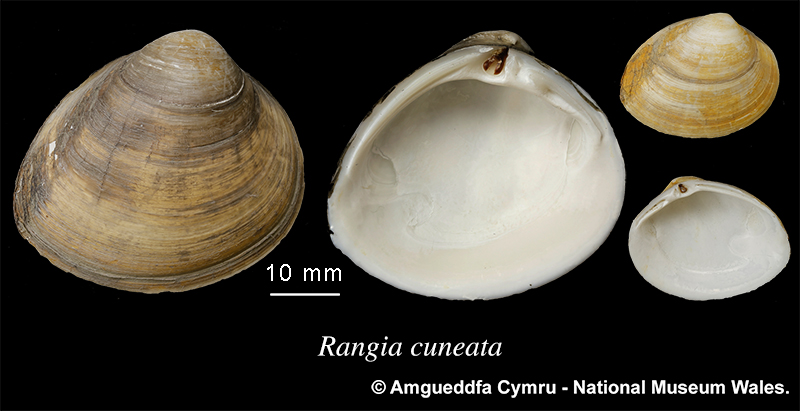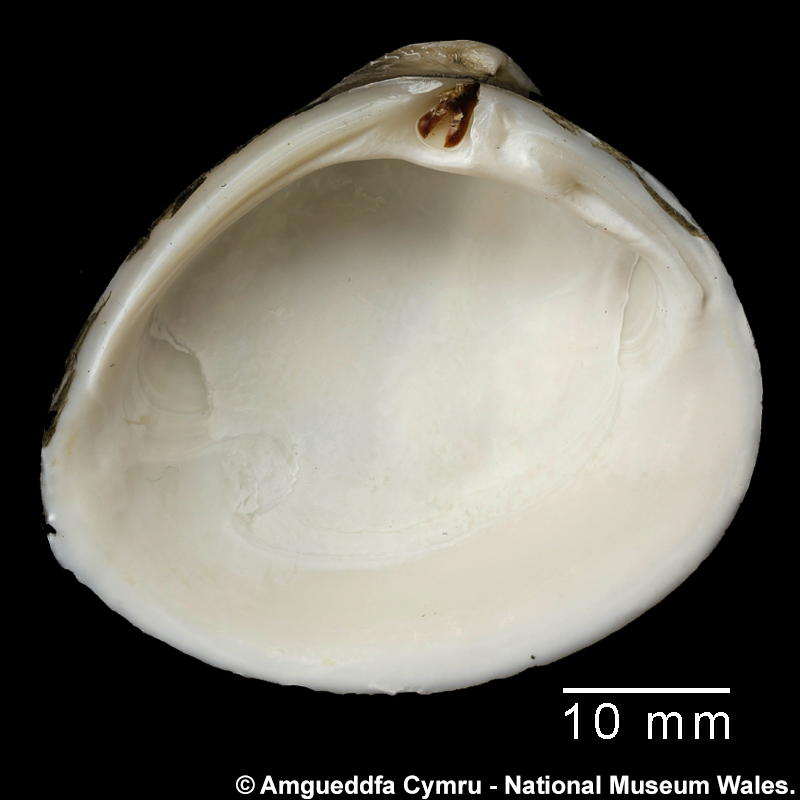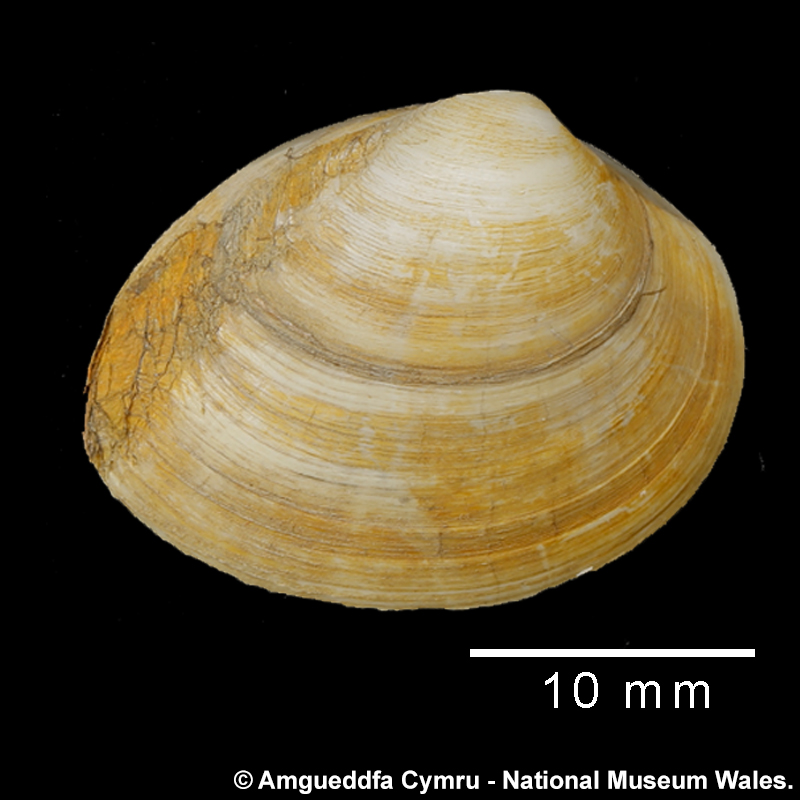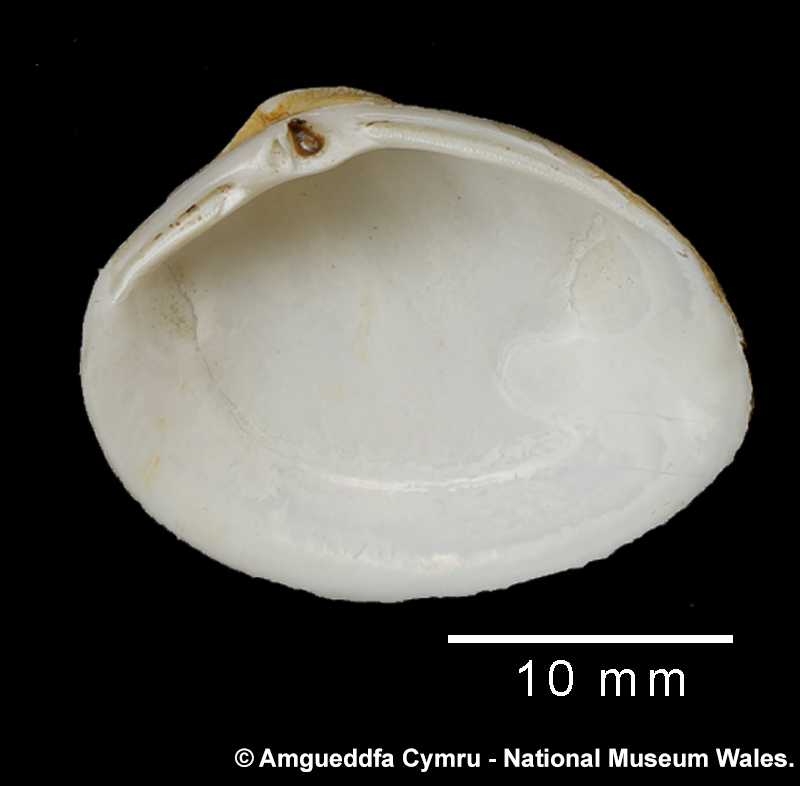Rangia cuneata (GB Sowerby I, 1831)
Mactroidea : Mactridae | Non-native |
| Tebble name: | n/a |
| Smith & Heppell name: | n/a |
To size: To 50mm. Shell Structure: Solid, thick. Equivalve: Equivalve. Equilateral: Slightly inequilateral, beaks slightly in front of midline. Tumidity: A little tumid, umbos prominent. Outline: Ovate-trigonal, slightly longer than high, posterior slope long, posterior more pointed than the broadly rounded anterior. Lunule and escutcheon not developed.
Sculpture: Of commarginal lines and weak undulations. Margin: Inner margin smooth. Ligament: Ligament internal in a prominent tear-drop shaped resilifer extending across the thick hinge plate. Hinge: Hinge plate thick, teeth strong; left valve with a small cardinal tooth anterior of the resilium, elongate anterior and posterior laterals with denticulate edges; right valve with a cardinal socket anterior of the resilium, with anterior and posterior lateral sockets. Pallial Musculature: Muscle scars distinct, adductor scars subequal. Pallial sinus short, rounded. Periostracum: Persistent, wrinkled in places and olive to light brown in colour. Colour: Shell off-white.
Distribution & Ecology
Depth Range
Intertidal
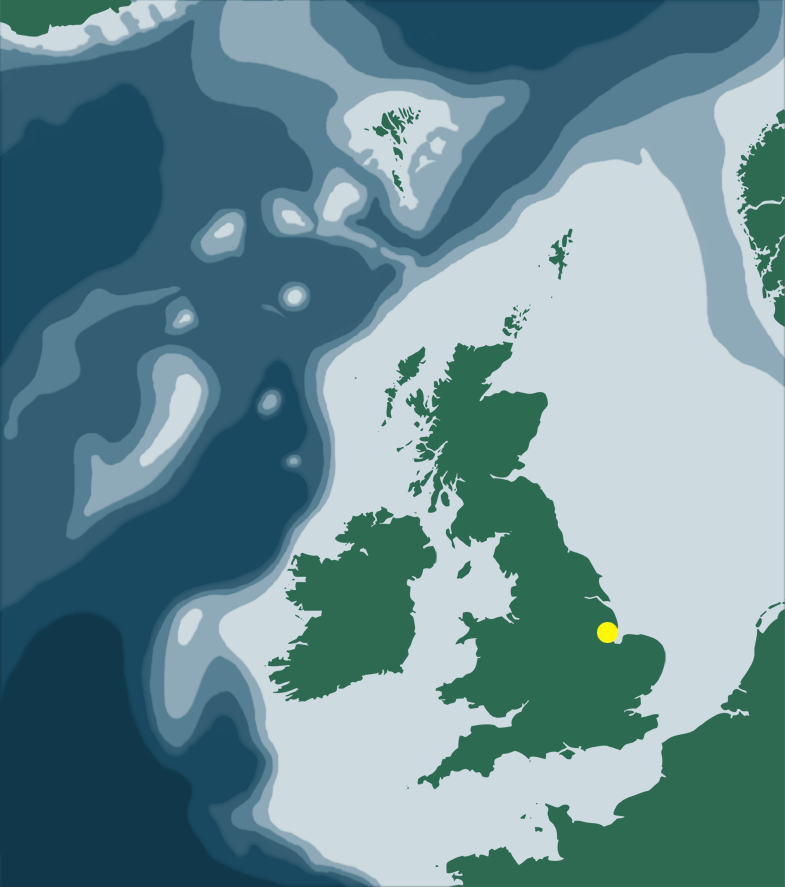
Additional Information & Related Species
Key Features & Similar Species
Related Species
Mactroidea : Mactridae
References
Listed are literature citing Rangia cuneata (GB Sowerby I, 1831). Reference containing the species Type Description is highlighted.
|
Rudinskaya L.V. & Gusev A.A. 2012. Invasion of the North American wedge clam Rangia cuneata (GB Sowerby I, 1831) (Bivalvia: Mactridae) in the Vistula Lagoon of the Baltic Sea.. Russian Journal of Biological Invasions. 3: 220-229. |
|
Sowerby G.B. I 1832 (1821-34). The genera of recent and fossil shells, for the use of students, in conchology and geology. London. Part 36. |
|
Verween A, Kerckhof F., Vincx M. & Degraer S. 2006. First European record of the invasive brackish water clam Rangia cuneata (GB Sowerby I, 1831) (Mollusca: Bivalvia) . Aquatic Invasions. 1(4): 198-203. |
|
Willing M.J. 2015. Two invasive bivalves, Rangia cuneata (GB Sowerby I, 1831) and Mytilopsis leucophaeta (Conrad, 1831), living in freshwater in Lincolnshire, Eastern England.. Journal of Conchology. 42 (2): 189-192. |
Resources
- Conchological Society
of Great Britain & Ireland
Provides resources for understanding, identifying, recording, and conserving molluscs - CLEMAM
Check List of European Marine Mollusca - MarLIN
The Marine Life Information Network for Britain and Ireland (MarLIN) provides information for marine environmental management, protection and education. It is a centre of excellence in spatially based and time-series marine biological information and supports good stewardship in the marine environment. - NBN Gateway
National Biodiversity Network's Gateway. Use it to explore UK biodiversity data, as contributed by participating data providers. - BivAToL
- MarBEF
- Malacological Society
- Unitas Malacologica
- Census of Marine Life
- MarBEF
MarBEF, a network of excellence funded by the European Union and consisting of 94 European marine institutes, is a platform to integrate and disseminate knowledge and expertise on marine biodiversity, with links to researchers, industry, stakeholders and the general public.


